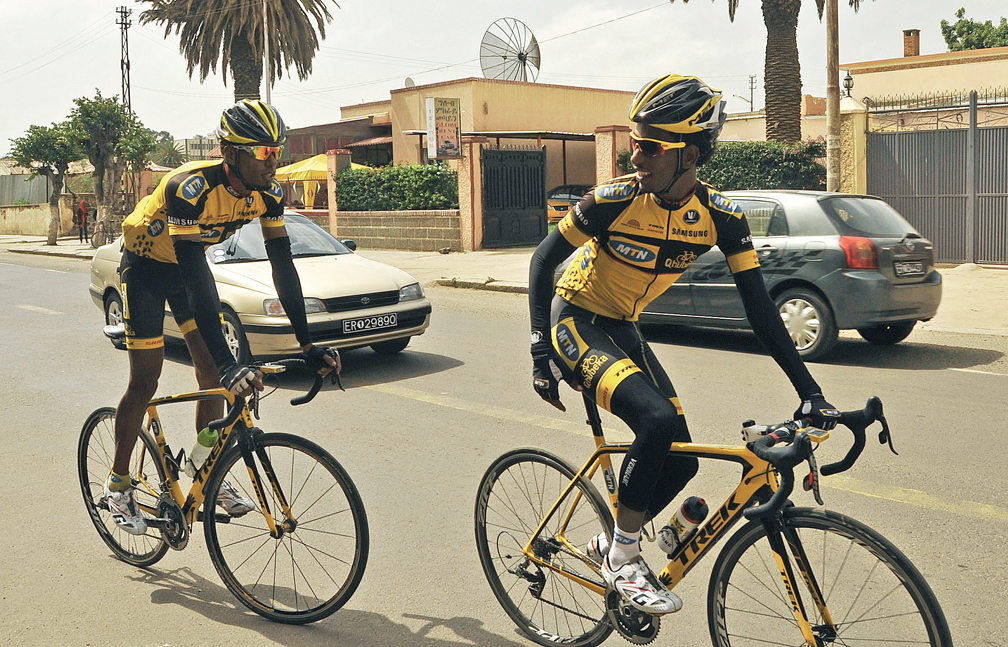AGENCE FRANCE-PRESSE
When Eritrean cyclist Natnael Berhane crossed the finish line of the Tour of Turkey in May 2013, he made history not only for his country but for his continent. Natnael, 22, who took first place after the winner was disqualified for doping, was the first person from Sub-Saharan Africa to win a race of that class.
Several Eritreans in this cycling-mad Horn of Africa state are making their mark on the sport, showing another side of a nation that makes headlines more for brutal repression than world-class athletes.
Eritrea offers an ideal training ground for serious cyclists, with its breathtaking, cliff-hugging roads that swoop from the highland capital Asmara, elevation 2,325 meters, in a 100-kilometer stretch down to the Red Sea. The groups of young people who take to the high-altitude routes alongside professional racers each weekend continue to grow.
“When I race in Europe, the aim is to introduce our country to the world,” professional cyclist Meron Russom said, sporting the bright yellow gear of his South African-based MTN Qhubeka team ahead of a training session. “We are still fighting to push Eritrea to the top in sport, especially cycling,” added the slender 26-year-old, a former winner of the Tour of Eritrea, a race modeled on the Tour de France.
Eritrea’s competitive cyclists have zoomed forward in recent years, boosted by a training center set up in South Africa by the International Cycling Union in 2005.
The tradition of cycling in Eritrea dates back more than a century, when Italians introduced the sport to the region. Although international races were hosted in Eritrea, it was not until the late 1940s that Eritreans were permitted to ride competitively alongside their Italian occupiers.
Today, cycling is an integral part of life as cars compete with bikes — the day-to-day transport for many — on the capital’s roads. The country boasts six professional riders who compete internationally, and more than 650 cyclists in the national cycling federation.

